Government bunker in Scotland
Due to the fact that recently there has been a healthy interest in missile defense, air defense and other missiles, I want to share a report on a visit to a thematic object. I would like to hope that the report will be interesting also by the fact that, firstly, for most readers the object is outside the zone of operational accessibility and secondly it tells about the approach to the question of our likely adversary.
Once, on a sunny morning, I rode through the Scottish province and enjoyed nature. You will lower the glass, the birds are singing, the warm spring breeze is blowing, the clever hare will cross the road. Suddenly I look - a house.

')
An ordinary rural house, there are hundreds of them here and it seems you should just stop at its door, as the farmer’s old wife will come out and offer to taste a delicious English breakfast. And only the perimeter of barbed wire and the top of the ventilation shafts sticking up nearby in the field suggested that something was wrong here.
In fact, there is a museum here, which I accidentally found out on one site and for which I had to make a detour of 150 kilometers.
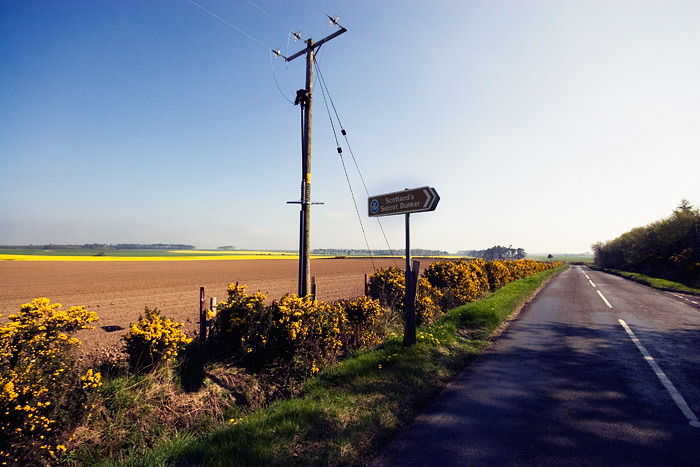

A bit of background information. Scotland's Secret Bunker is located in the area of the city of St. Andrews, 5 kilometers from the North Sea coast . The exact construction dates are unknown, but it is known that the bunker began its life in the late 40s as one of the radar stations of the Rotor project , aimed at preventing a possible nuclear attack from the USSR. However, in connection with the development of interception technologies, already in the mid-50s, the bunker "fell under reduction" and was mothballed. In 1958, the bunker was mothballed and turned into the regional headquarters of civil defense. Around 1970, the facility was substantially rebuilt, expanded, and began serving as a government bunker in case of a nuclear attack. After the modernization there could accommodate up to 300 people. This continued until 1992, when it was decided to create a museum at this place, which began its work in 1994.
4. Go inside.
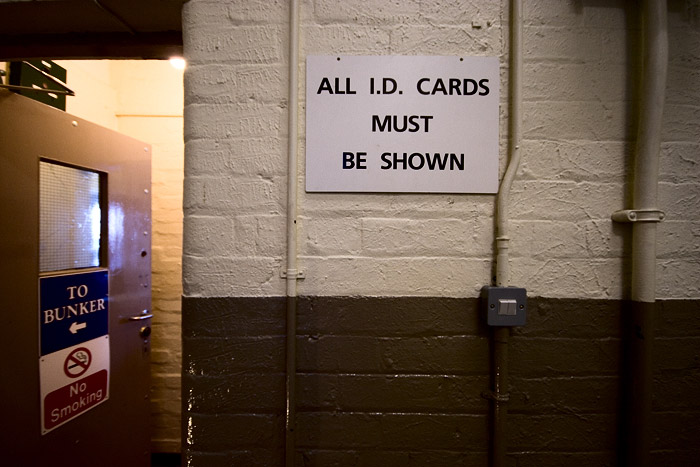
5. We descend (literally 4 flights) on the stairs and get into the corridor.
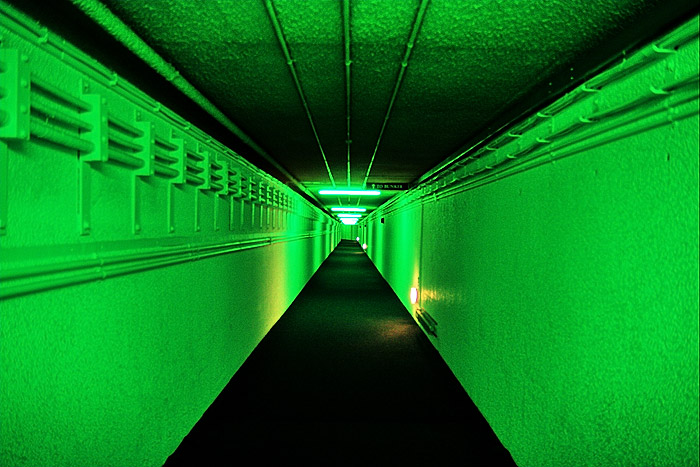
6. At the end, two fire stands on which rooms are open.

7. Sideways in the wall running into the cable manifold.

8. Doors of the bunker. 1.5 tons each.

9. Ventilation.
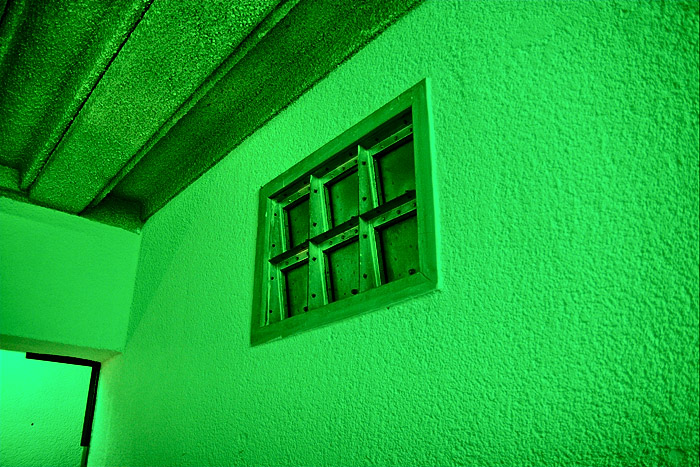
10. Sounds good.
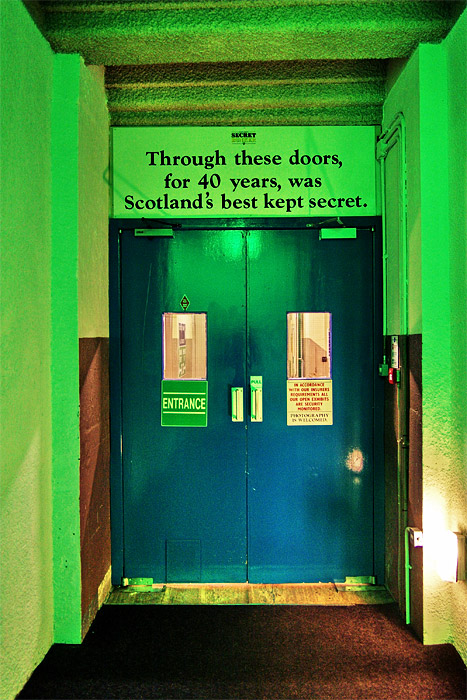
11. Bunker two-level. Both levels have a similar layout - a corridor with rooms departing from it.

12. Headquarters (?)
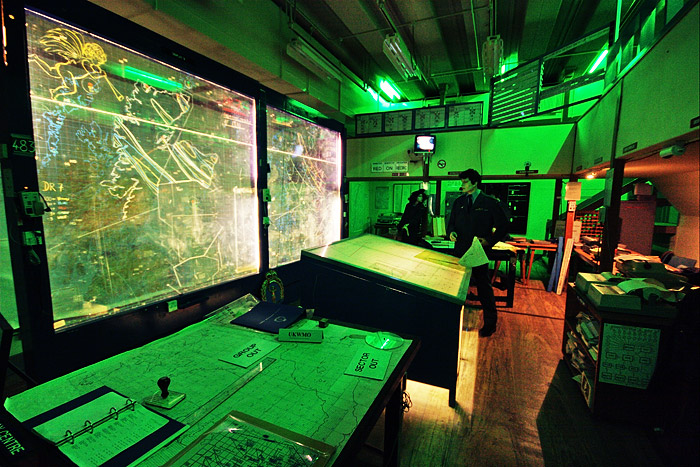
13. The same, the view from the balcony.

14. First-aid post.
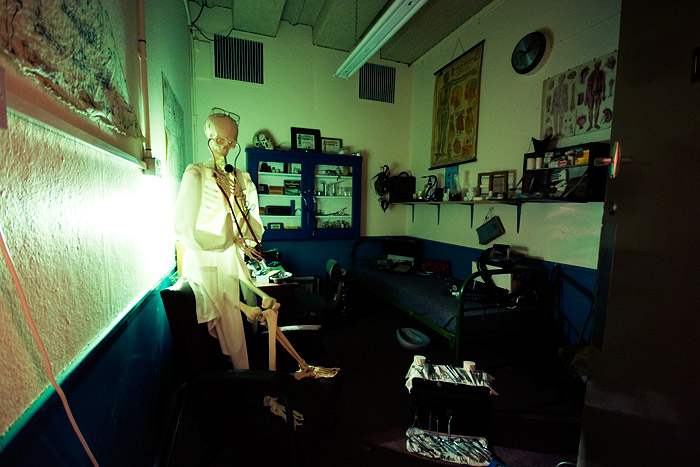
15. The upper level corridor and the door to the dormitory.

16. Bedroom.
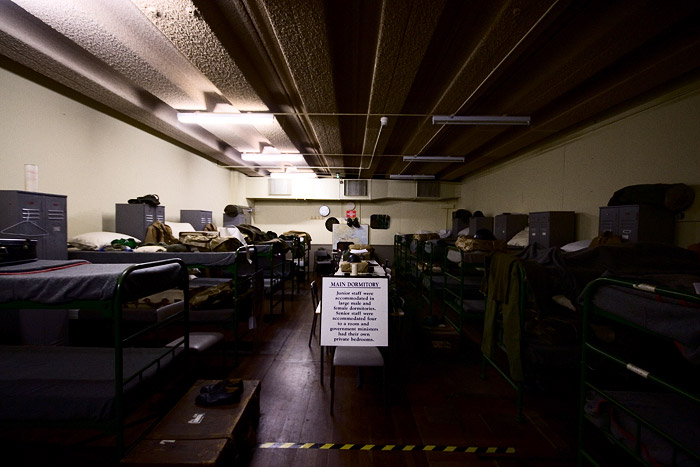
17. Studio of broadcasting, sound producer's room. Behind the glass room announcer.
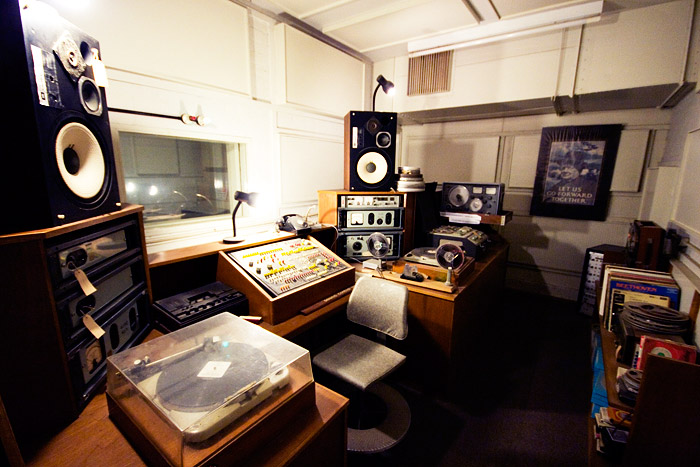
18. Broadcasting studio, announcer's room.

19. Two-hall cinema.

20. One of the halls, the second is quite similar.

21. Chapel.

22. The explanatory label read: “The computer room was linked to the national computer.”

23. A room with filtration equipment and a heating system. Unfortunately, it was closed, shot through the glass in the door. Filters are capable of removing 1500 cubic meters of air per minute from radioactive particles, bacteria and gas, which allows you to completely renew the atmosphere in the bunker 14 times in 15 minutes. In the event of a fire, the system can pull off combustion products at a speed of 2,200 cubic feet per minute. The air can be cooled, heated, ozonated, de-zoned, humidified and dried. In addition, the bunker has a 750-kilowatt generator that can operate for 3 months. This equipment is still maintained in a healthy state.

24. Communication Center.
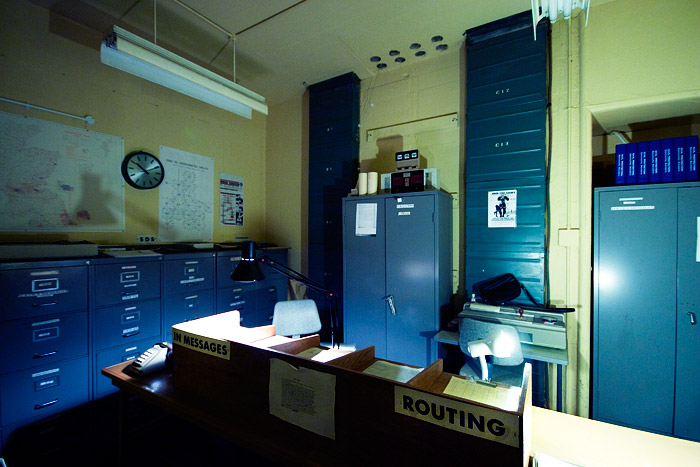
25. Teletype.

26. Telephone switch.
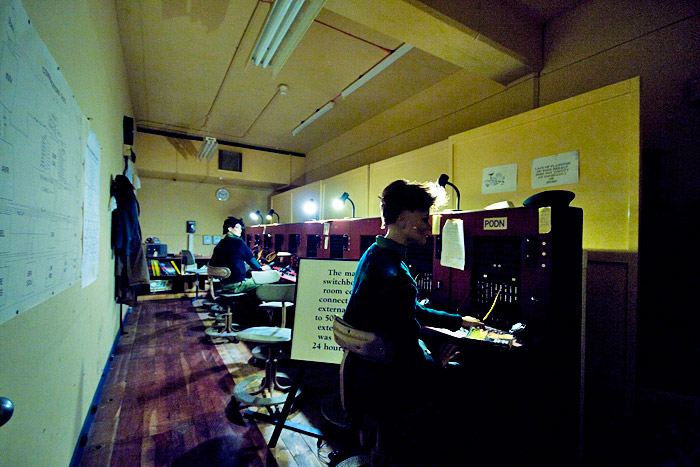
27. Headquarters emergency services.

28. The same room as in the 22 photos.
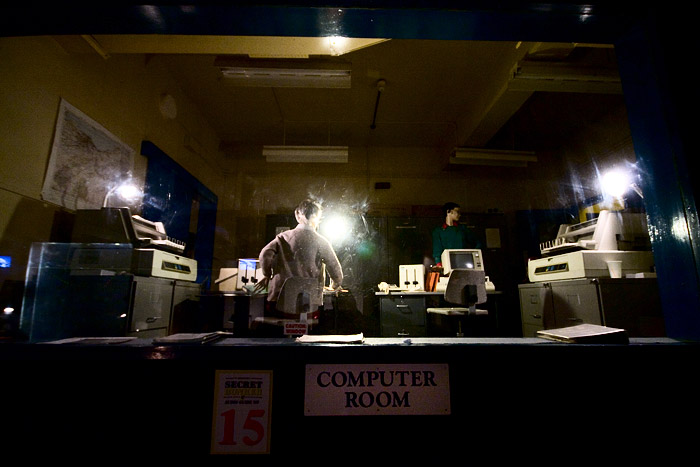
29. Room scientific consultants and meteorological services.
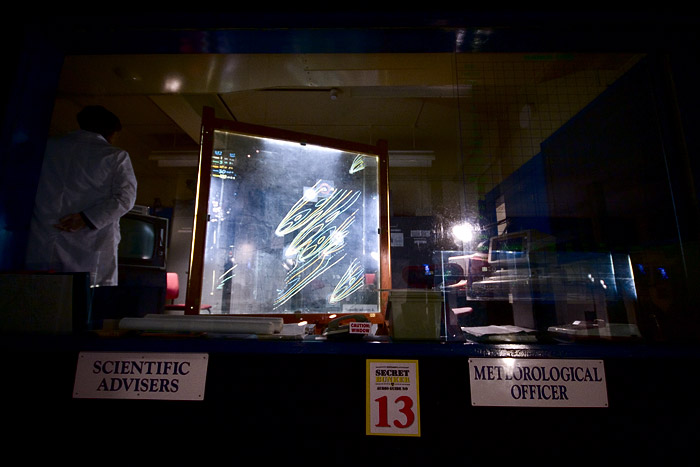
30. The Cabinet of the Minister (although it is not clear what kind of name).
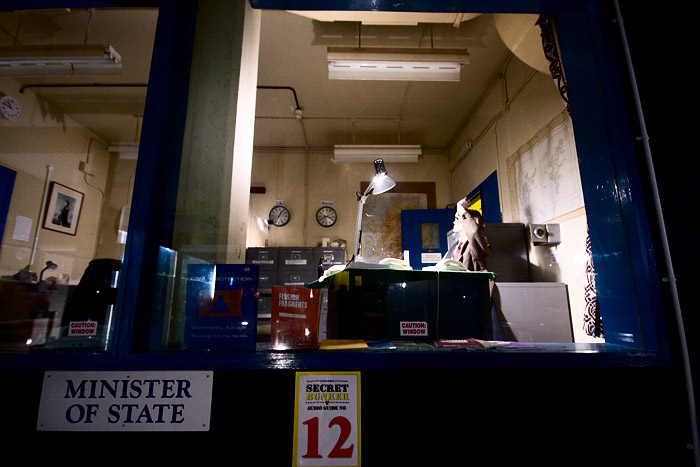
31. Department of Health :)
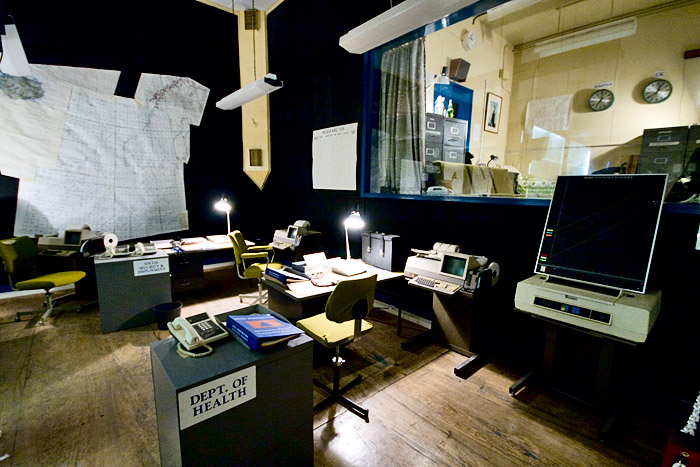
32. One of the rooms of the headquarters of civil defense.
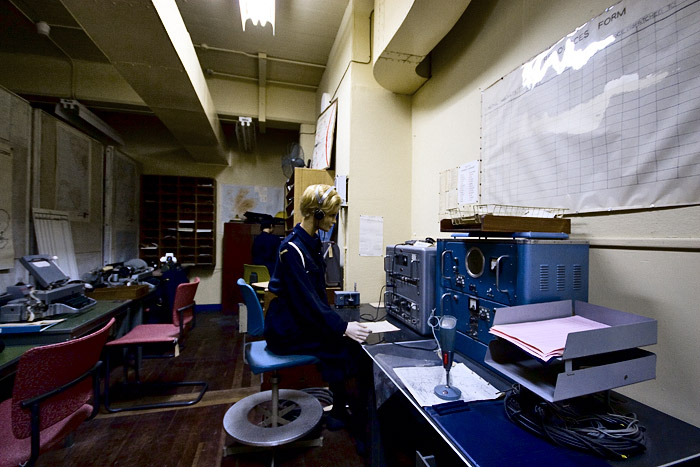
33. The headquarters of the Royal Air Force.

34. Radar interception room.

35. "This is a room for BT digital communication". “BT” is, apparently, a bunkers of telecommunications, although I did not find an exact interpretation of this abbreviation.

36. Mistress note.

37. On the street, something like a technology museum under the open sky. True, the technology itself is rather small and it is kind of very heterogeneous, the feeling as if it had been found was dragged, without any system. My attention was drawn to one exhibit.

You can download all the photos I took in this museum (120 pieces, 78 megabytes). Photos not selected and unprocessed, just wrapped raw in jpg and slightly reduced. The quality is not very, because it was a bit dark, and I did not think to take a tripod with me.
Once, on a sunny morning, I rode through the Scottish province and enjoyed nature. You will lower the glass, the birds are singing, the warm spring breeze is blowing, the clever hare will cross the road. Suddenly I look - a house.

')
An ordinary rural house, there are hundreds of them here and it seems you should just stop at its door, as the farmer’s old wife will come out and offer to taste a delicious English breakfast. And only the perimeter of barbed wire and the top of the ventilation shafts sticking up nearby in the field suggested that something was wrong here.
In fact, there is a museum here, which I accidentally found out on one site and for which I had to make a detour of 150 kilometers.


A bit of background information. Scotland's Secret Bunker is located in the area of the city of St. Andrews, 5 kilometers from the North Sea coast . The exact construction dates are unknown, but it is known that the bunker began its life in the late 40s as one of the radar stations of the Rotor project , aimed at preventing a possible nuclear attack from the USSR. However, in connection with the development of interception technologies, already in the mid-50s, the bunker "fell under reduction" and was mothballed. In 1958, the bunker was mothballed and turned into the regional headquarters of civil defense. Around 1970, the facility was substantially rebuilt, expanded, and began serving as a government bunker in case of a nuclear attack. After the modernization there could accommodate up to 300 people. This continued until 1992, when it was decided to create a museum at this place, which began its work in 1994.
4. Go inside.

5. We descend (literally 4 flights) on the stairs and get into the corridor.

6. At the end, two fire stands on which rooms are open.

7. Sideways in the wall running into the cable manifold.

8. Doors of the bunker. 1.5 tons each.

9. Ventilation.

10. Sounds good.

11. Bunker two-level. Both levels have a similar layout - a corridor with rooms departing from it.

12. Headquarters (?)

13. The same, the view from the balcony.

14. First-aid post.

15. The upper level corridor and the door to the dormitory.

16. Bedroom.

17. Studio of broadcasting, sound producer's room. Behind the glass room announcer.

18. Broadcasting studio, announcer's room.

19. Two-hall cinema.

20. One of the halls, the second is quite similar.

21. Chapel.

22. The explanatory label read: “The computer room was linked to the national computer.”

23. A room with filtration equipment and a heating system. Unfortunately, it was closed, shot through the glass in the door. Filters are capable of removing 1500 cubic meters of air per minute from radioactive particles, bacteria and gas, which allows you to completely renew the atmosphere in the bunker 14 times in 15 minutes. In the event of a fire, the system can pull off combustion products at a speed of 2,200 cubic feet per minute. The air can be cooled, heated, ozonated, de-zoned, humidified and dried. In addition, the bunker has a 750-kilowatt generator that can operate for 3 months. This equipment is still maintained in a healthy state.

24. Communication Center.

25. Teletype.

26. Telephone switch.

27. Headquarters emergency services.

28. The same room as in the 22 photos.

29. Room scientific consultants and meteorological services.

30. The Cabinet of the Minister (although it is not clear what kind of name).

31. Department of Health :)

32. One of the rooms of the headquarters of civil defense.

33. The headquarters of the Royal Air Force.

34. Radar interception room.

35. "This is a room for BT digital communication". “BT” is, apparently, a bunkers of telecommunications, although I did not find an exact interpretation of this abbreviation.

36. Mistress note.

37. On the street, something like a technology museum under the open sky. True, the technology itself is rather small and it is kind of very heterogeneous, the feeling as if it had been found was dragged, without any system. My attention was drawn to one exhibit.

You can download all the photos I took in this museum (120 pieces, 78 megabytes). Photos not selected and unprocessed, just wrapped raw in jpg and slightly reduced. The quality is not very, because it was a bit dark, and I did not think to take a tripod with me.
Source: https://habr.com/ru/post/87633/
All Articles